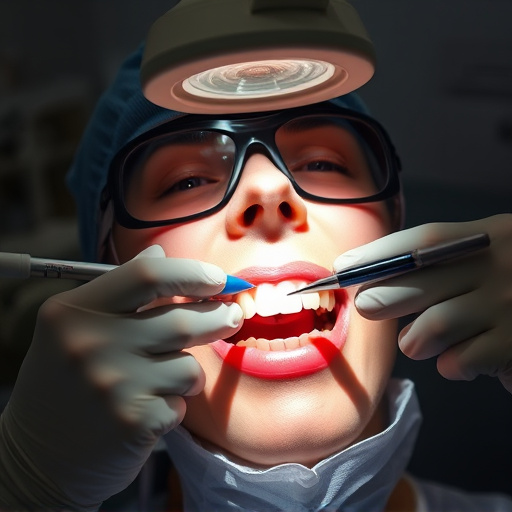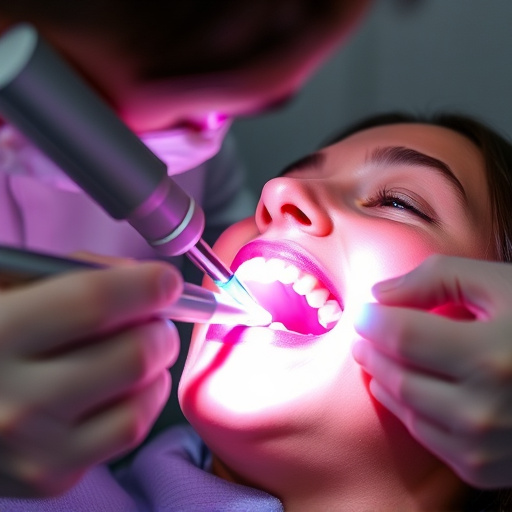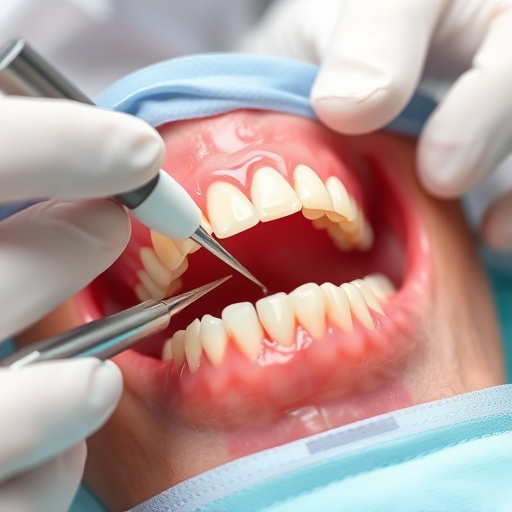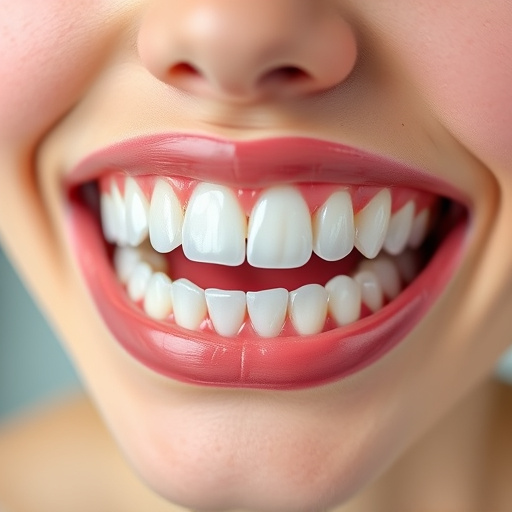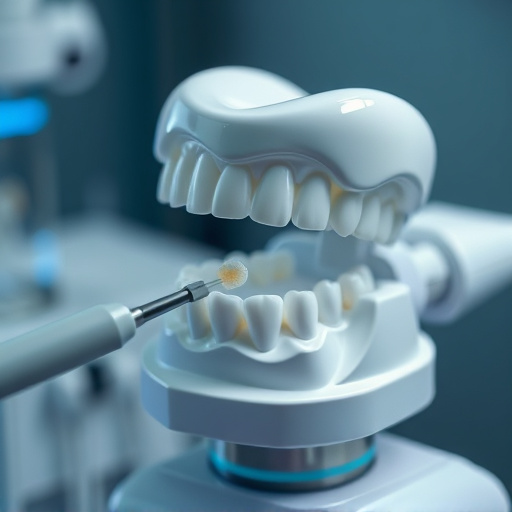3D dental imaging technology has transformed dental care through unprecedented precision and accuracy in diagnostic procedures. Using specialized scanners like CBCT, it creates detailed 3D models of teeth, gums, and jaw structures, providing dentists with a comprehensive view for better planning during routine exams and children’s dentistry. This method improves implant placement accuracy, reduces complication risks, speeds recovery times, and enhances communication among dental professionals for better patient collaboration. By offering clearer views compared to traditional 2D X-rays, 3D dental imaging is a game-changer in family dentistry, improving treatment outcomes especially when integrated with procedures like clear aligners.
“Unleashing precision in dental implants, 3D dental imaging technology is transforming the way we plan and place artificial teeth. This advanced technique offers a detailed, three-dimensional view of oral structures, revolutionizing traditional two-dimensional methods.
In this comprehensive guide, we explore the intricacies of 3D dental imaging, highlighting its numerous advantages for implant procedures. From enhancing accuracy to improving treatment outcomes, this technology is a game-changer in modern dentistry.”
- Understanding 3D Dental Imaging Technology
- Benefits of 3D Imaging for Implant Planning
- The Process and Equipment Used in 3D Dental Imaging
Understanding 3D Dental Imaging Technology
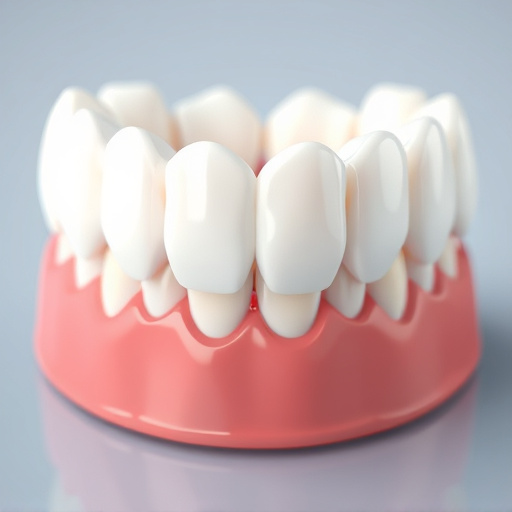
3D dental imaging technology has revolutionized comprehensive dental care, offering a new level of precision and accuracy in diagnostic procedures. This advanced imaging method utilizes specialized scanners to capture detailed 3D models of teeth, gums, and jaw structures, providing dentists with a comprehensive view of oral health. Unlike traditional 2D X-rays, 3D dental imaging provides a detailed, three-dimensional representation, allowing for more precise planning during routine oral exams and children’s dentistry.
The benefits of this technology extend beyond improved visualization. Dentists can use these 3D models to plan implant placement with greater accuracy, ensuring proper alignment and fit from the outset. This not only reduces the risk of complications but also leads to faster recovery times for patients. Moreover, it enhances communication between dental professionals, enabling them to collaborate effectively on complex cases, ultimately benefiting patients receiving comprehensive dental care.
Benefits of 3D Imaging for Implant Planning
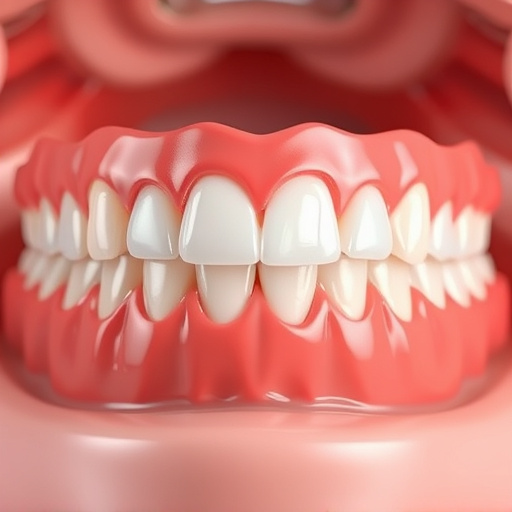
3D dental imaging has transformed implant planning and placement, offering numerous benefits over traditional 2D methods. This advanced technology provides a detailed, three-dimensional view of the oral cavity, enabling dentists to precisely visualize tooth structures, jawbones, and surrounding tissues. With this level of detail, dentists can more accurately assess bone density, identify anatomical landmarks, and plan implant placement with greater confidence.
Furthermore, 3D imaging facilitates improved communication between dentists and patients. High-quality, visual representations of proposed implant solutions help patients understand and embrace treatment plans. This is particularly beneficial in children’s dentistry, where explaining complex procedures can be challenging. Even for cosmetic fillings or dental crowns, 3D imaging enhances precision, ensuring better outcomes and reducing the need for revision surgeries, ultimately saving time and money for both patients and practitioners.
The Process and Equipment Used in 3D Dental Imaging
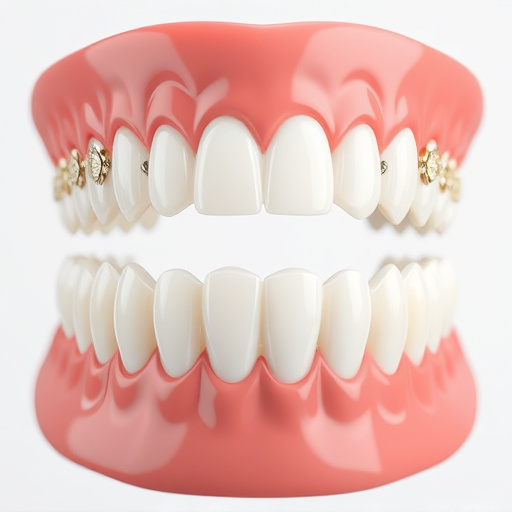
The process of 3D dental imaging involves advanced technology to capture detailed, three-dimensional representations of teeth, gums, and surrounding structures. This is typically achieved using cone-beam computed tomography (CBCT) scanners, which rotate around the patient’s head to gather multiple angular views. These images are then reconstructed using specialized software to create a comprehensive 3D model. This non-invasive technique offers a more accurate view of dental anatomy compared to traditional two-dimensional X-rays, making it invaluable for various dental procedures, including tooth extractions and implant planning.
The equipment used in 3D dental imaging includes the CBCT scanner itself, along with powerful computer systems for image processing. Modern scanners are designed to be efficient, fast, and user-friendly, allowing dentists to quickly capture high-resolution images. This advanced technology enables precise measurements and evaluations, ensuring accurate planning for dental implants. It’s a game-changer in family dentistry, providing clearer insights and ultimately improving treatment outcomes, especially when combined with other procedures like clear aligners.
3D dental imaging is transforming implant planning and placement, offering enhanced accuracy and improved patient outcomes. By providing detailed, three-dimensional views of dental structures, this technology allows for precise surgical guidance, reducing complications and ensuring successful implant integration. As 3D imaging continues to evolve, it promises to further revolutionize the field of dentistry, making advanced oral care more accessible and efficient.





